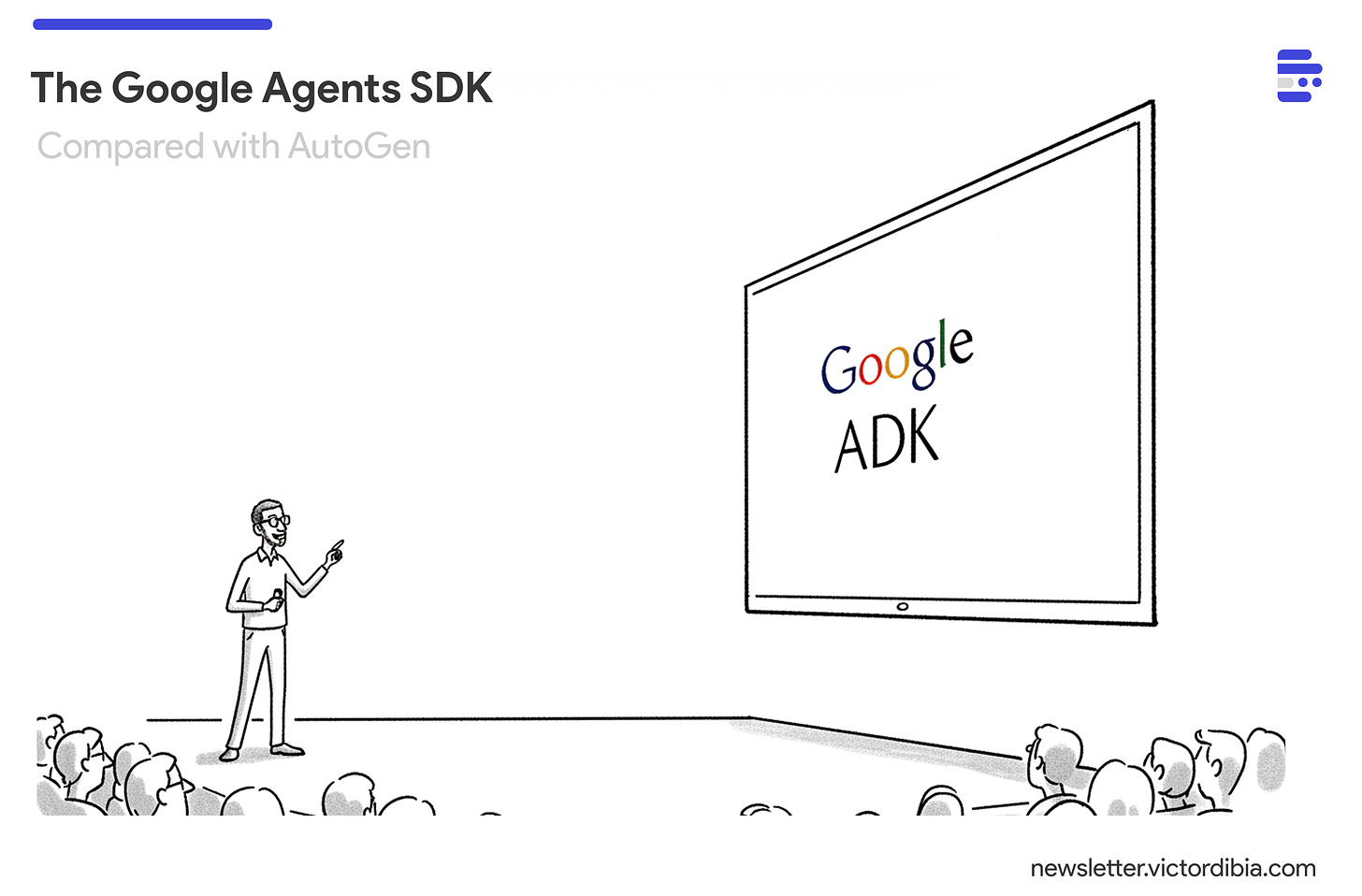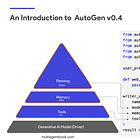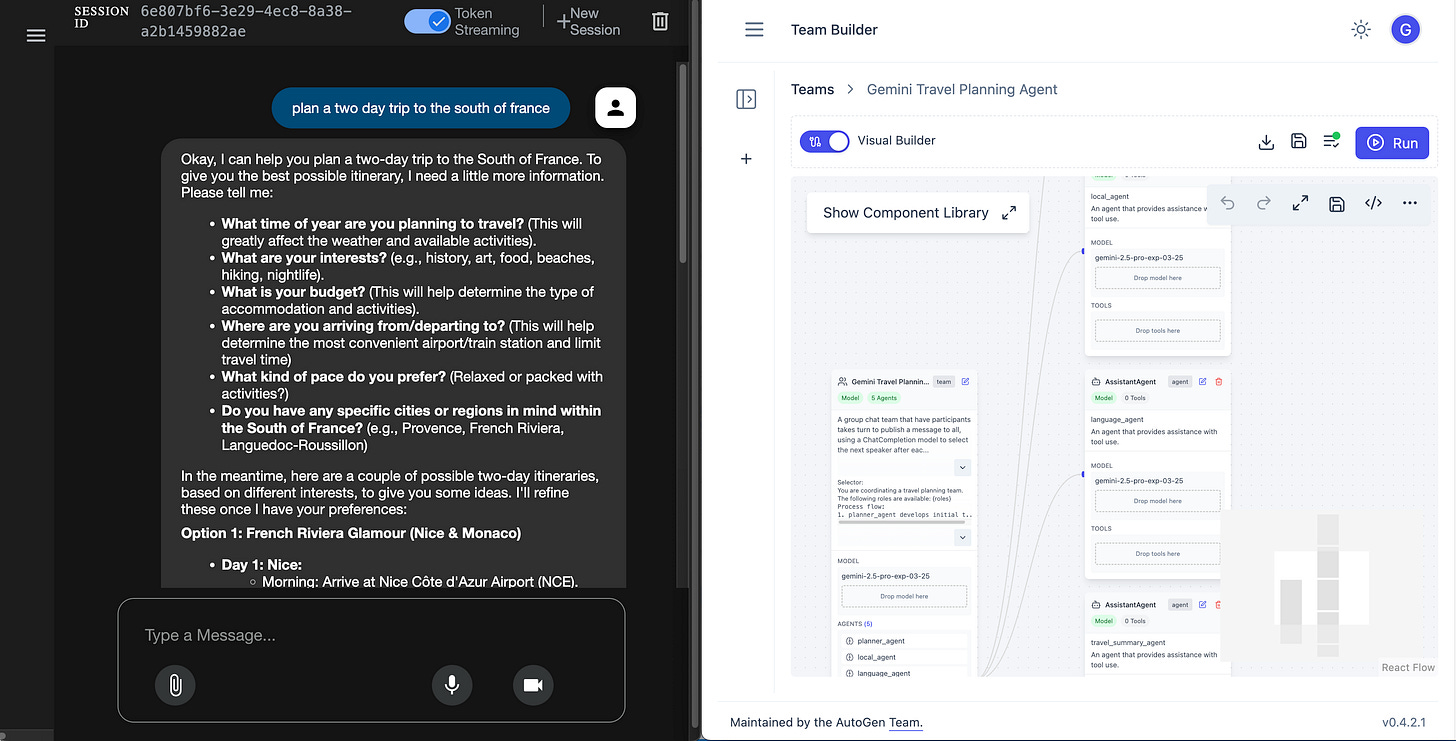The Google Agents SDK, A2A (Compared with AutoGen)
#35 | A walkthrough on the newly released Google ADK
Google released an agent SDK today at the Google CloudNext conference - the Google ADK. Having spent considerable time working on the AutoGen multi-agent framework, I was intrigued to see many design decisions we've made in AutoGen mirrored in this new framework.
This post examines the similarities and differences between these two agent frameworks.
Similarities with AutoGen
Similar agent abstraction - Both use the pattern of
agent = Agent(model, description, tools, instructions/system_message).Support for common multi-agent patterns.
Both provide abstractions for common multi-agent control flow patterns - patterns where an LLM drives control flow, or deterministic patterns where control flow is defined in code.Google ADK - LLMAgents, Workflow Agents (Sequential, Parallel)
AutoGen - AgentChat Teams, AutoGen Core (Sequential Parallel). Here, I find the AutoGen teams api to be significantly more parsimonious for implementing
Use of a FunctionTool
Both implement a FunctionTool abstraction to provide a consistent interface for tools with support for external tools like LangChain tools:AutoGen FunctionTool
Google ADK FunctionTools
Runtimes
If you would like to compare what the API looks like for AutoGen, LangGraph, OpenAI agents, see this interactive tool I built for comparing implementations of a helloworld agents sample across several frameworks.
Hint: its 32 lines of code in AutoGen AgentChat vs ~72 lines of code in Google ADK to implement a simple agent that calls a calculator tool.
Notable Differences
The Google ADK has some limitations and then some things it does really well IMO.
From a quick overview, there are a few ways in which the Google ADK could be improved compared to AutoGen.
Runtime Management
While Google ADK does have the concept of a runtime/runners, AutoGen has a well defined Runtime that handles message delivery, agent lifecycle management with support for StandAlone and Distributed Runtime.
Google also released the Agent2Agent Protocol which lends itself well to the distributed agent scenario.
Task Management Abstractions
Limited task management (e.g., task termination abstractions). See example task termination conditions in AutoGenLow Code Tooling.
The attached web UI is well integrated but still early/limited in terms of the debugging and rapid prototyping features compared to AutoGen StudioDeclarative Specs
No support for declarative agent/multiagent specifications. See declarative specification in AutoGen which enables agent building in UIs.Observability and Tracing
I couldn't find a good approach for implementing open observability/tracing (e.g., with Open Telemetry). This contrasts with the more robust Tracing and Observability in AutoGen.
Naturally, I expect all of these features to improve as the library matures and garners usage.
There are a few things that I think it also does really well:
Keep reading with a 7-day free trial
Subscribe to Designing with AI to keep reading this post and get 7 days of free access to the full post archives.





